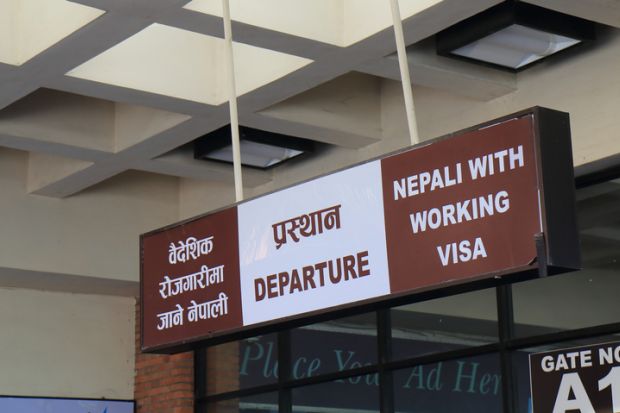Education agents fear that thousands of international students are exploiting a visa loophole to obtain jobs in Australia.
Concerns focus on what has been described as an “unnatural” influx of students from Nepal: the Himalayan nation is the third biggest contributor of foreign students in Australia, and is easily the fastest growing.
By mid-2018 there were almost 42,000 Nepali student visa holders in Australia, compared with 70,000 from India, which has a population roughly 40 times the size. The number of Nepali students grew by 55 per cent last financial year, triple the growth rate from India.
The Association of Australian Education Representatives in India said it suspects that Nepali applicants are enrolling at Australian universities to boost their prospects of securing visas, and then jumping ship to cheaper colleges soon after they arrive.
AAERI president Rahul Gandhi said that Australian visa rules allow students to change providers after six months. He said that many Nepali people, attracted by the entitlement to two years of post-study work in Australia, are capitalising on the policy.
Mr Gandhi said that universities’ low immigration risk rating makes it relatively easy for their enrolled students to obtain visas. “Then they move on to some private education provider where the fees can be less than half [as high].
“It’s like a trading game. You get a visa based on a prominent university in Sydney or Melbourne, and within six months you change your provider for a cheaper one.”
These claims could help to explain why Nepali students are so attracted to Australia. The number of visas granted to people from the country has multiplied by 24 over the past dozen years, with a steadily increasing proportion obtaining fresh visas after they arrive in Australia. Temporary graduate visa grants have more than doubled since 2013-14, with Nepali people allocated post-study work visas at almost triple the rate of other international students.
Education sources said that plenty of Nepali students are genuinely interested in obtaining credentials, with many staying on to work in the health and social care sectors – meeting Australian skill needs and channelling much-needed cash to relatives back home in the earthquake-ravaged country.
Nevertheless, sources acknowledged a problem in student flows from Nepal, which has a history of volatility. Late last decade, an immigration department crackdown – prompted by claims of doctored visa applications from people who were seeking residency and had little intention of studying – triggered a crash in Nepali vocational education enrolments.
Visa grants to Nepali training students plummeted by 72 per cent in 2009-10, having grown more than 20-fold over the previous three years.
Mr Gandhi said that the new trend in Nepali student movements was not simply a case of students shopping around for the best deal. In an echo of concerns over similar immigration controversies in the UK and elsewhere, he said that the trend jeopardises universities’ immigration risk ratings and could “disrupt the Australian education brand”.
It also undermines universities’ recruitment efforts, facilitated by agents who are “double-dipping” by claiming commissions when students first come to Australia and then again when they change colleges.
“Genuine students are those who not only study, but finish their courses,” Mr Gandhi said. “They should apply for visas based on the provider where they plan to finish, not start.”
AAERI wants international students to be obliged to remain with their initial institutions for at least a year. It opened a Nepal chapter in June and “strongly recommends” that Australian education providers work only with its members.
POSTSCRIPT:
Print headline: Influx of Nepali students to Australia triggers concerns over visa loophole
Register to continue
Why register?
- Registration is free and only takes a moment
- Once registered, you can read 3 articles a month
- Sign up for our newsletter
Subscribe
Or subscribe for unlimited access to:
- Unlimited access to news, views, insights & reviews
- Digital editions
- Digital access to THE’s university and college rankings analysis
Already registered or a current subscriber? Login








